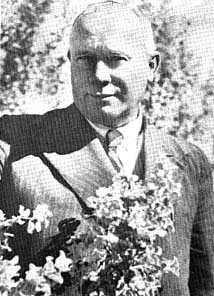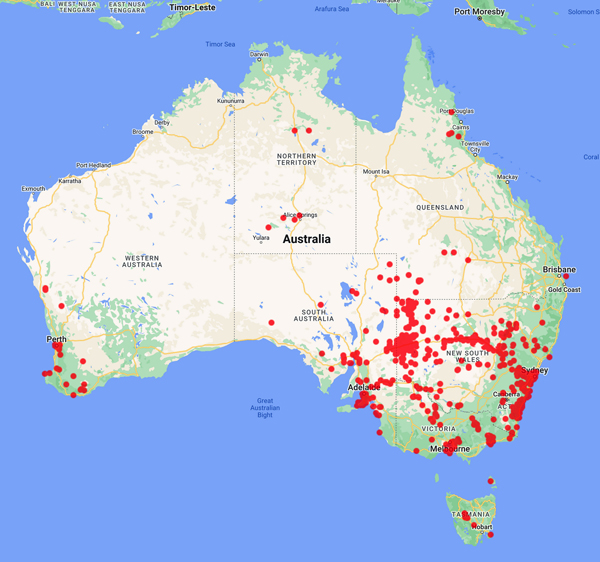
Council of Heads of Australasian Herbaria
Australian National Herbarium
Biographical Notes
 |
Council of Heads of Australasian Herbaria |
 Morris, Albert (1886 - 1939)
Morris, Albert (1886 - 1939)Born in Bridgewater, South Australia, on 13 August 1886, died in Broken Hill, New South Wales, on 9 January 1939.
He was the second son of Albert Joseph Morris, stonecutter from England, and his wife Emma Jane, née Smith. The family moved to the new silver-field of Thackaringa, New South Wales, and in 1890 to Broken Hill.
His lifelong passion for botany may have resulted from an injury to his foot in infancy that left him crippled for life and debarred him from sport. He was educated at Burke Ward Public School and at Broken Hill Technical College, where he obtained a diploma in metallurgy; he grew and sold pepper trees to pay his fees. He was employed by the Central Mine from 1902 and became its chief assayer.
At Broken Hill on 13 April 1909 he married Ellen Margaret Sayce, dressmaker. They built a tiny cottage in Cornish Street, Railway Town, an area most exposed to soil erosion and drifting sand.
Morris cultivated a desert garden and, assisted by Edwin Ashby, experimented with a wide range of plants from dry areas, including Arizona and South Africa. He found that species grown from seed collected locally withstood drought conditions better than others. In 1920 with W. D. K. MacGillivray he helped to found the Barrier Field Naturalists' Club.
Numerous field expeditions in his spare time greatly increased his knowledge and his collection to over 5000 pressed specimens, which his wife later gave to the Waite Institute of South Australia.
Until 1936 no mining company was willing to control sand drift by implementing Morris's idea of a green belt, which he asserted would "not only help, but will wholly remove the problem . . . providing you fence a fairly large area with stock and rabbit-proof fencing, and give some help for the first few years". W. S. Robinson, managing director of the Zinc Corporation Ltd, decided to support Morris.
In May 1936 the company established a twenty-two-acre (9 ha) plantation, later named the Albert Morris Park. Morris provided seedlings and advised the planting of native grasses, eucalypts and Old Man Saltbush, a species that had almost disappeared locally. Within eighteen months the results were so impressive that the North Broken Hill and Broken Hill South companies joined the scheme.
Survived by his wife, but childless, he died of a cerebral tumour on 9 January 1939 at Broken Hill and was buried with Anglican rites.
Details of his life and work are described in the book The Greening of the Hill - Re-vegetation of Broken Hill in the 1930s by Horace Webber (1992) published by Hyland House.
Source: Extracted from:
A.E.Orchard (1999) A History of Systematic Botany in Australia, in Flora of Australia Vol.1, 2nd ed., ABRS.
https://adb.anu.edu.au/biography/morris-albert-bert-7659
Portrait Photo: from interpretive sign, Broken Hill.
Data from 3,474 specimens
